Updated: December 17, 2025
From its neighborhoods steeped in history and stunning hilltop viewpoints to its delectable custard tarts and soulful Fado music, Lisbon offers charm, beauty, and culture in every experience and landmark. But with so much to see and do, where do you begin?
As Portugal’s oldest buyer’s agent deeply rooted in Lisbon, Porto, and the Algarve, we’ve explored every corner of Portugal and know Lisbon like the back of our hand. We’ve meticulously crafted this insider guide, highlighting the must-see Lisbon tourist attractions and unforgettable experiences to make your trip unforgettable.
Use this guide as your Lisbon attractions map when navigating the city.
1. Conquer Castelo de São Jorge (St. George's Castle)
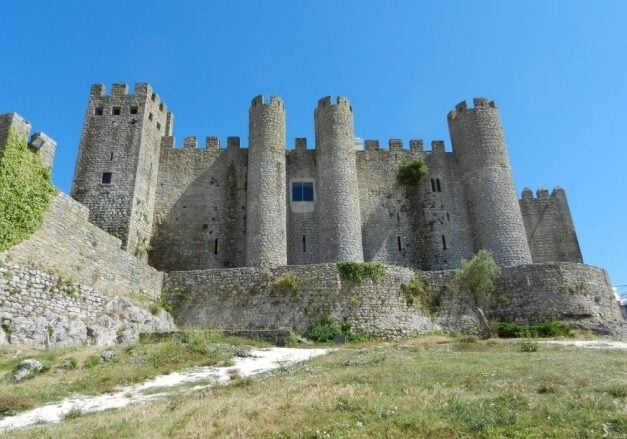
Starting off strong, Lisbon’s iconic Castelo de São Jorge is one of the top things to do in Lisbon. This majestic 11th century Moorish castle not only preserves a piece of history but also offers the most breathtaking panoramic views across the city and the Tagus River.
It was first the Royal Palace and then was later used by the military, before opening to the public in the 1940s.
Wander through peacocks roaming freely, climb the towers, and take in the centuries of history beneath your feet. It’s an immersive journey back in time, perfect for a sunny morning.
Practical information:
- Tickets: Tickets cost €15 for adults, €12.50 for seniors, €7.50 for children older than 12 years old, and free for children younger than 12. Purchase at the entrance or online (recommended to avoid queues). The Lisboa Card is a great purchase if you are planning on visiting many attractions while in Lisbon, as it includes entry to multiple attractions on this list, including Castelo de São Jorge.
- Best time to go: The best time to go is early morning as it opens or late afternoon, about two hours before closing, to avoid crowds and enjoy the best light for photos.
- Visit duration: One to two hours
Expert travel tip: Look for the camera obscura inside the castle for a unique live projection of the city.
2. Immerse Yourself in Belém's Historical Treasures: Torre de Belém, Jerónimos Monastery and Monument to the Discoveries
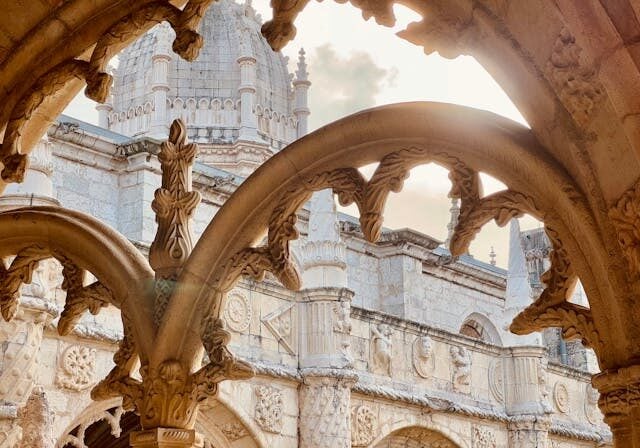 Step back in time to Portugal’s Age of Discoveries in Belém’s magnificent UNESCO World Heritage sites and iconic places to visit in Lisbon. What’s perfect about the tourist attractions in Belém is that they are quite close to each other. So, with proper planning, you can see them all in one trip to the neighborhood!
Step back in time to Portugal’s Age of Discoveries in Belém’s magnificent UNESCO World Heritage sites and iconic places to visit in Lisbon. What’s perfect about the tourist attractions in Belém is that they are quite close to each other. So, with proper planning, you can see them all in one trip to the neighborhood!
The Torre de Belém is a fortress that once was used as a watchtower for Lisbon Harbor. Its striking Manueline architecture against the backdrop of the Tagus River is a one-of-a-kind sight to see. If you’re traveling to Lisbon any time soon, take note that the Belém Tower is currently closed for refurbishment, but the view from outside can still be enjoyed as part of a walking tour.
Just a short stroll away is the Mosteiro dos Jerónimos (Jerónimos Monastery). Built to celebrate Vasco da Gama’s voyage, the Jerónimos Monastery is packed with beautiful arches and delicate stone carvings – a perfect addition to your Belém cultural sightseeing.
Nearby, the impressive Padrão dos Descobrimentos (Monument to the Discoveries) completes the trio of attractions. This striking monument remembers Portugal’s explorers with intricate statues of 33 key historical figures of the golden age of Portuguese history. Take the lift to its top for fantastic views of the Tagus River, Belém, and the giant Compass Rose on the ground below.
Practical information:
- Tickets: Purchase tickets for each monument at each entrance, or you can buy tickets online to save time. Combined tickets and walking tours for these attractions are often available. The Lisboa Card includes entry to the Belém Tower and Jerónimos Monastery.
- Best time to go: Early morning as each monument opens is best to avoid the biggest crowds, especially at Jerónimos Monastery and Belém Tower. Weekdays are generally less busy than weekends. Clear days offer the best views from the Monument to the Discoveries.
- Cost: Around €8 for Torre de Belém, €18 for Jerónimos Monastery cloister, and €5-€10 for the Monument to the Discoveries (to go to the top).
- Visit duration: Allow three to four hours for a comfortable visit to all three, plus travel time.
Expert travel tip: Start your Belém exploration at Jerónimos Monastery right when it opens to beat the tour groups, then head to Belém Tower and finally the Monument. Don’t forget to combine this with a visit to the nearby Pastéis de Belém to taste the original recipe of the iconic Portuguese custard tart, pastel de nata. The Museum of Art, Architecture, and Technology (MAAT Museum) is also nearby if you have time to spare, where you can take in contemporary Portuguese art and exhibits.
3. Step into Lisbon Cathedral (Sé de Lisboa)
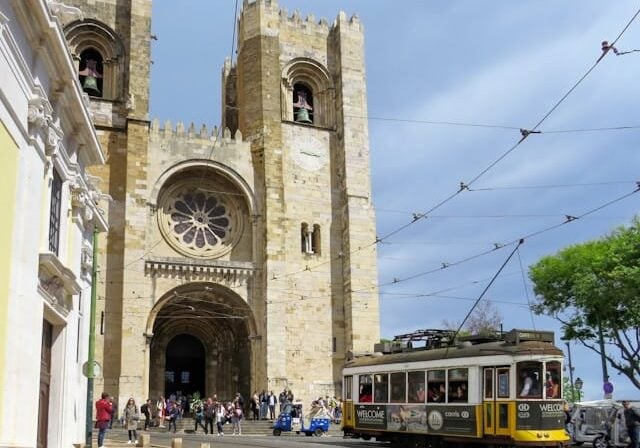 Lisbon’s stoic Cathedral, the city’s oldest church, is a resilient Romanesque fortress that has withstood earthquakes and centuries of history.
Lisbon’s stoic Cathedral, the city’s oldest church, is a resilient Romanesque fortress that has withstood earthquakes and centuries of history.
As such, the Cathedral has also been renovated and rebuilt many times throughout the years, leading to its mix of Romanesque, Gothic, Medieval, and Baroque architecture. It is truly a must-see in Lisbon.
Explore its dark interior as well as the cloisters (often built over Roman and Moorish ruins) and the treasury for a deeper dive into its past.
Practical information:
- Tickets: It is free to enter the main church and around €5-€7 for the cloisters and treasury.
- Best time to go: Morning, outside of mass times (Sunday mornings), for a quieter experience
- Visit duration: 30-60 minutes
Expert travel tip: Look for the archaeological excavations in the cloisters. These excavations have uncovered a Roman road with shops, a Roman kitchen, a sewage system, and traces of Visigothic and Moorish buildings.
4. Take in Praça do Comércio
Located in Baixa Chiado, Praça do Comércio (Commerce Square) is one of Lisbon’s most impressive public spaces, opening directly onto the Tagus River.
At its center stands a statue of King José I, who ruled during the 1755 earthquake that reshaped the city. On the northern side, the grand Arco da Rua Augusta marks the entrance to downtown Lisbon, an ornate arch featuring sculptures of historical figures like explorer Vasco da Gama and statesman Marquês de Pombal.
Praça do Comércio is the perfect place to relax by the water, snap photos, and soak up the city’s atmosphere before wandering down the lively Rua Augusta or riverside promenade.
Practical information:
- Tickets: It’s free to enter the square. Tickets for the Arch (Arco da Rua Augusta) can be purchased at its base for about €3. Entry is also included with the Lisboa Card.
- Best time to go: Any time of day is ideal, making it a great location to take a break in between other sights. Sunset offers beautiful light, and evenings often have street performers.
- Visit duration: 30 minutes to one hour, or longer if you climb the Arch or sit at a cafe.
Expert travel tip: Climb to the top of the Arco da Rua Augusta for an elevated perspective of the square, Baixa, Central Lisbon, and the river – it’s often less crowded than other viewpoints.
5. Ride the Santa Justa Lift (Elevador de Santa Justa)
Among the iconic Lisbon attractions is the Santa Justa Lift, or Elevador de Santa Justa, a striking iron elevator in Baixa, built to connect downtown Lisbon to Carmo Square above. Designed by a student of Gustave Eiffel (yes, of the Eiffel Tower), it offers a short but unforgettable ride in a vintage cabin that feels like transporting yourself through history.
At the top, you’ll find a rooftop platform with panoramic views over the city’s rooftops and the Tagus River. Just be ready for a line during busy hours; this is one of Lisbon’s most iconic experiences.
Practical information:
- Tickets: A single ride for the Elevador de Santa Justa is typically €5.50 (return), which includes access to the viewing platform. If you have the Lisboa Card or a 24-hour public transport pass, the ride is included.
- Best time to go: Early morning or late evening to avoid the notoriously long queues.
- Visit duration: 30 to 60 minutes once it gets to your turn (can be much longer due to queues).
Expert travel tip: If you’re not too fussed about riding the lift, you can avoid the long queues for the lift itself by walking up the hill from Largo do Carmo to access the viewpoint directly. You’ll still get the views without waiting for the ride!
6. Discover the Calouste Gulbenkian Museum
 If you’re looking to take a break from the historical monuments in Lisbon, escape into a world-class art collection at the Calouste Gulbenkian Museum.
If you’re looking to take a break from the historical monuments in Lisbon, escape into a world-class art collection at the Calouste Gulbenkian Museum.
This modern museum houses the incredible private collection of Armenian oil magnate Calouste Gulbenkian, spanning ancient Egyptian artifacts, Islamic art, European paintings (including Rembrandt and Rubens), and exquisite Art Nouveau jewelry by René Lalique. The surrounding gardens are also a peaceful urban escape.
If you’re traveling to Lisbon soon, please note the Calouste Gulbenkian Museum is closed for renovations until July 2026. However, the Great Works exhibition is open until September 2025, displaying some of the museum’s collections. The museum’s gardens, concert hall, CAM Modern Art Centre, and the art library also remain open.
Practical information:
- Tickets: Purchase at the museum for around €6-€14
- Best time to go: Any time during opening hours, the museum does not get as crowded as the historical monuments
- Visit duration: One to two hours
Expert travel tip: Take some time to explore the beautiful modern gardens surrounding the museum.
7. Wander Through Alfama District and Experience Fado Music
 If you’re wondering what to do in Lisbon on a tight budget, the historic neighborhoods are great places to explore.
If you’re wondering what to do in Lisbon on a tight budget, the historic neighborhoods are great places to explore.
Lose yourself in the enchanting maze of Alfama, Lisbon’s oldest and most authentic district. Here, you’ll find narrow, winding streets, steep alleys, and charming squares that remarkably survived the 1755 earthquake. You’ll also find clotheslines hanging from balconies, local taverns, and the sounds of fado music drifting from open doorways.
While in the neighborhood, you can head to one of the small, intimate Fado houses in Alfama for an unforgettable evening of traditional, soulful music.
This is one neighborhood where we would highly recommend a walking tour with a local guide. You’ll uncover so many more secrets and hidden gems with someone who knows the ins and outs of Alfama.
Practical information:
- Best time to go: Anytime during the day or night. To experience the best of Portugal’s nightlife, Alfama is a top location. Evenings are magical for atmospheric and nostalgic Fado performances.
- Cost: Free (excluding tour guide fees, food, drinks, or Fado performances)
- Visit duration: Two to four hours (can be much longer if you explore extensively)
Expert travel tip: Wear comfortable shoes! Alfama’s cobblestone streets are charming but can be challenging. Seek out the Miradouro das Portas do Sol and Miradouro de Santa Luzia for classic Alfama views.
8. Hop on Tram 28
Taking a ride on the famous yellow Tram 28 is the quintessential Lisbon experience. This vintage tram rattles and winds its way through some of Lisbon’s most historic and picturesque neighborhoods, including Estrela, Chiado, Baixa, Alfama, and Graça, offering a charmingly bumpy sightseeing tour.
This is an iconic experience and one of the many fun things to do in Lisbon that also doubles as a scenic and affordable tour of the city’s historic districts. The main starting point to hop on is at Martim Moniz Square.
Practical information:
- Tickets: Included with a Lisboa Card or a 24-hour public transport pass. A single ticket costs about €3.10.
- Best time to go: Very early morning or late evening to avoid extreme crowds
- Duration: A full loop takes about 40-50 minutes, but you can hop off and on.
Expert travel tip: For the classic photo opportunity, aim for the track section between Miradouro das Portas do Sol and the Lisbon Cathedral.
9. Chase the Views at Lisbon's Miradouros (Viewpoints)
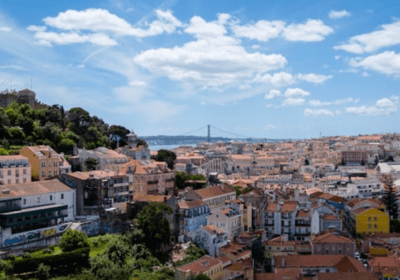 One of the best things to do in Portugal, let alone Lisbon, is to explore the many miradouros (viewpoints) in the city. It is the ultimate way to experience the city’s beauty from a unique perspective.
One of the best things to do in Portugal, let alone Lisbon, is to explore the many miradouros (viewpoints) in the city. It is the ultimate way to experience the city’s beauty from a unique perspective.
For arguably the most expansive and stunning panoramic views of the city, the Tagus River, and even São Jorge Castle, make your way to Miradouro da Senhora do Monte. Located in the Graça district, it’s a favorite among locals and often offers a slightly less crowded experience, perfect for sunrise or sunset.
Beyond Senhora do Monte, seek out other fantastic viewpoints, each offering its own unique perspective of the city.
In Alfama, you’ll find the iconic tiled benches of Miradouro das Portas do Sol and Miradouro de Santa Luzia, providing classic postcard views. For a garden setting with views towards the castle, head to Miradouro de São Pedro de Alcântara, while Miradouro de Santa Catarina is popular for lively sunset drinks.
Practical information:
- Best time to go: Any clear day will do. Sunset is incredibly popular but can be busy. Early morning offers clear and peaceful views.
- Cost: Free for all viewpoints
- Visit duration: Around 30-45 minutes per viewpoint, or longer if you plan to stay for a picnic
Expert travel tip: Pack a small picnic or grab a cold drink from a nearby kiosk to enjoy the views at leisure. At Miradouro da Senhora do Monte, look for the map illustrating all the visible landmarks.
10. Indulge in Pastéis de Nata
No visit to Lisbon is complete without a taste of the warm, creamy, and crispy Pastéis de Nata. These iconic Portuguese custard tarts are a national obsession, and for good reason!
While you can find them everywhere, the original, secret recipe at Pastéis de Belém is a legendary must-try, as we have already mentioned.
Practical information:
- Getting there: Pastéis de Belém is located near Jerónimos Monastery in Belém. Other bakeries are found throughout the city.
- Best time to go: Anytime! Freshly baked tarts are always available.
- Cost: Around €1 – €1.50 per tart
11. Feast at Time Out Market (Mercado da Ribeira)
Prepare for a culinary adventure at Time Out Market, Lisbon’s vibrant food hall located in the historic Mercado da Ribeira. Here, you’ll find a curated selection of Portugal’s best chefs, nice restaurants, and traditional food stalls under one roof, offering everything from gourmet burgers and seafood to traditional Portuguese dishes and decadent desserts.
Practical information:
- Getting there: Next to Cais do Sodré train and metro station
- Best time to go: Lunch or dinner. Weekends can be extremely busy, but weekday afternoons are generally calmer.
- Cost: Varies depending on what you eat, but generally mid-range.
- Visit duration: One to two hours
Expert travel tip: Go with a group and share dishes to try as much as possible! Finding a table can be challenging during peak hours, so be prepared to share or wait.
12. Discover the Creative Scene at LX Factory
Step into Lisbon’s more modern creative scene at LX Factory, a former industrial complex beneath the 25 de Abril Bridge that has been transformed into a trendy hub of independent boutiques, quirky cafes, unique restaurants, art studios, and street art. It’s a fantastic spot for unique shopping, a leisurely brunch, or just soaking in the alternative vibe. When you’re there, don’t forget to check out the rooftop with stunning views of the 25 de Abril Bridge!
Practical information:
- Best time to go: Weekends for the market atmosphere, but weekdays are good for browsing the shops and street art
- Cost: Free (excluding purchases)
- Visit duration: One to two hours
Expert travel tip: Don’t miss the amazing bookstore, Ler Devagar, with its towering shelves and quirky mechanical displays.
Note: LX Factory is great for shopping, but if you are seeking out more luxury shopping in Portugal, Avenida de Liberdade in the center of Lisbon should be on your hit list!
13. Explore the National Azulejo Museum
 While the creativity is still flowing, why not immerse yourself in the colorful history and artistry of Portuguese tiles (azulejos) at the National Azulejo Museum.
While the creativity is still flowing, why not immerse yourself in the colorful history and artistry of Portuguese tiles (azulejos) at the National Azulejo Museum.
Housed in the beautiful former convent of Madre de Deus, the museum showcases a stunning collection of these decorative ceramic tiles from the 15th century to the present day, including a magnificent panoramic view of pre-earthquake Lisbon.
The museum is one of the creative things to do in Lisbon that allows you to appreciate the unique art form that defines so much of Lisbon’s visual identity.
Practical information:
- Tickets: Purchase at the museum
- Best time to go: Any time during opening hours
- Cost: Around €5-€6 for adults, but Lisboa Card holders have free entry.
- Visit duration: One to two hours
Expert travel tip: Pay special attention to the church within the convent itself. It’s elaborately decorated with stunning gold leaf and azulejos.
14. Explore São Vicente de Fora Church and Monastery
 Often overlooked by tourists, the São Vicente de Fora Church and Monastery is a hidden gem that offers incredible history and stunning views.
Often overlooked by tourists, the São Vicente de Fora Church and Monastery is a hidden gem that offers incredible history and stunning views.
This grand 17th century church features beautiful cloisters adorned with azulejos (Portuguese tiles) depicting La Fontaine’s Fables, and a pantheon that serves as the final resting place for many Portuguese monarchs.
Climb to the rooftop for an expansive view of Alfama and the Tagus River.
Practical information:
- Getting there: The Church is located just outside Alfama, a short walk from Miradouro das Portas do Sol. Tram 28 passes nearby.
- Tickets: Small entrance fee (around €6-€8) for the monastery, cloisters, and rooftop (Lisboa Card holders enjoy a discounted rate)
- Best time to go: Morning or late afternoon for good light
- Visit duration: 1-1.5 hours.
Expert travel tip: Don’t miss the unique “fable” azulejos in the cloisters; they are a unique and beautiful feature.
15. Embark on a Day Trip to Sintra (Including Pena Palace)
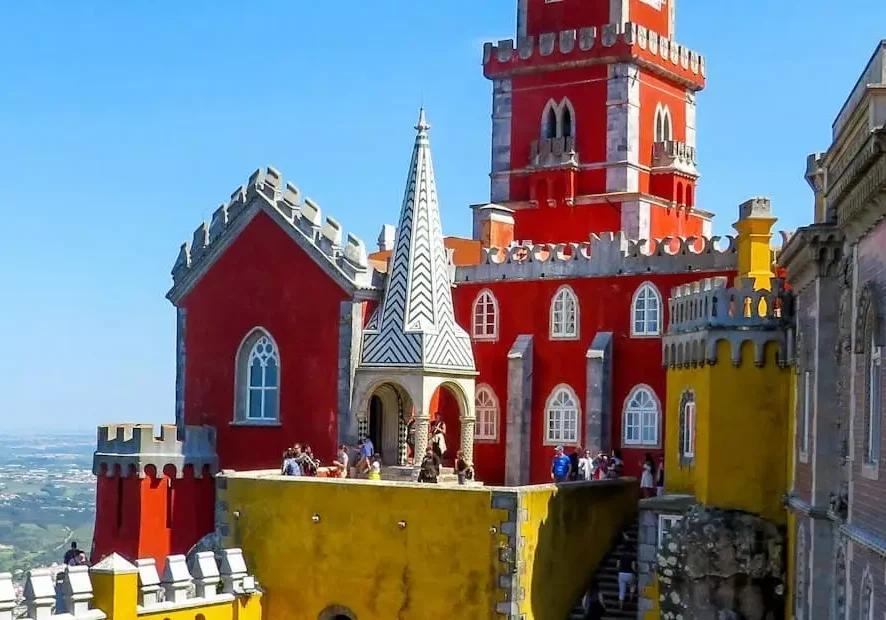 Once you’ve marked off all the must-see attractions on your Lisbon tourist map, it’s time to go on day trips to Lisbon’s gorgeous surrounding areas. The first stop we would recommend is the whimsical fairytale world of Sintra.
Once you’ve marked off all the must-see attractions on your Lisbon tourist map, it’s time to go on day trips to Lisbon’s gorgeous surrounding areas. The first stop we would recommend is the whimsical fairytale world of Sintra.
A UNESCO World Heritage town, Sintra is nestled in the lush hills just outside Lisbon. This enchanting destination is famous for its romantic 19th century architecture, mystical gardens, and, most notably, its stunning palaces.
The undeniable crown jewel is the colorful Pena Palace, perched high on a hill. This Romanticist castle, with its mix of Neo-Gothic, Neo-Manueline, Neo-Islamic, and Neo-Renaissance elements, looks straight out of a storybook. Explore the elaborate interiors of Pena Palace and wander through the vast, mystical park and gardens surrounding it.
Beyond Pena, Sintra offers other captivating sites like the enigmatic Quinta da Regaleira with its initiation well, and the ancient Moorish Castle walls offering panoramic views.
Practical information:
- Getting there: The best way is by train from Rossio Train Station in Lisbon (about 40 minutes). From Sintra train station, you can take the Sintra Sightseeing Bus or a taxi up the steep hills to the palaces.
- Tickets: You will need to purchase individual tickets for each royal palace/attraction online, on their website, well in advance (highly recommended to reserve timed entry slots for Pena Palace interior). Combination organized tour tickets for multiple sites are also available.
- Best time to go: Early morning is crucial to beat the crowds, especially for Pena Palace. Aim to be at the palace for opening time. Avoid weekends and peak season (July to August) if possible.
- Cost: Palace entry fees will vary, but Pena Palace costs around €15-€17 and Quinta da Regaleira costs about €10-€15.
- Visit duration: You will need a full day to properly explore Sintra and its main attractions. Allow two or three hours just for Pena Palace and its park.
Expert travel tip: Prioritize which palaces you want to see most. Pena Palace and Quinta da Regaleira are the most popular and can easily fill a day. To save time at Pena Palace, buy your tickets online for the palace interior and select the earliest possible time slot. Focus on the exterior and gardens first, as the interiors can feel crowded and rushed.
16. Unwind in Cascais
For a refreshing coastal escape, take a day trip to Cascais, a charming former fishing village that has blossomed into a sophisticated seaside resort town.
Enjoy its golden sandy beaches, stroll along the picturesque marina, explore the quaint old town, and indulge in fresh seafood. It’s a perfect contrast to Lisbon’s bustling city life.
Practical Info:
- Getting there: You can take a direct train from Cais do Sodré station in Lisbon (about 30-40 minutes). The scenic train ride follows the coastline. You could also drive there.
- Tickets: You’ll just need a train ticket (if you decide to travel by train)
- Best time to go: Any sunny day, bearing in mind that summers can be crowded
- Visit duration: Half to full day
Expert travel tip: Rent a bike and cycle along the coastal path (Ciclovia do Guincho) towards Boca do Inferno (Hell’s Mouth) for dramatic cliff views, and further to Guincho Beach for surfing.
Tip for golfers: Lisbon and the Lisbon Coast’s great golf courses offer something for every level and are amongst the best in the world. Be sure to check them out if you’re seeking beautiful courses with ocean views.
Goldcrest: Who We Are
Goldcrest is a buyer’s agent based in Lisbon, Porto, and the Algarve. Equipped with local knowledge, exclusive networks, and international experience, we provide expert, impartial advice on real estate investments in Lisbon and Portugal.
From scouting out the perfect property to property acquisition and beyond, we have you covered throughout the process, whether you are moving to Lisbon or seeking a smart investment opportunity. Lisbon was named the sixth most profitable city in Europe for buy-to-rent, yielding significant returns for investors.
If you are considering buying property in Lisbon – or elsewhere in Portugal – we are on hand to help.
Why choose Goldcrest?
- Local knowledge: With offices located throughout Portugal, our presence nationwide allows us to assist you personally.
- Independent service: As an independent buying agent, we do not represent any development or project. Our service is entirely tailored to each client, providing you with everything you need to secure the perfect property at the best price possible. As an impartial advisor on the market, we work solely on behalf of our clients and provide a service tailored to your needs and requirements.
- Streamlined process: Our real estate agents speak English and Portuguese, and our service is entirely focused on providing you with a hassle-free buying experience, saving you time.
- Experienced team: Our expert real estate team has a vast local knowledge of the Portuguese property market. We have cutting-edge technology and metasearch tools at your disposal to provide complete market coverage, ensuring the best investment choices and negotiated prices.
- Network of partners: Lawyers, property management services, builders, architects, designers, and landscape gardeners, again saving you time and hassle by providing you with trusted experts in their field of work.
If you’d like to explore Portugal’s second-largest city, Porto, check out our complete guide to discovering the city: Things to Do in Porto.
Frequently Asked Questions about the Most Beautiful Places in Lisbon
What are the best day trips from Lisbon?
The best day trips to take when visiting the Portuguese capital include a 30-minute drive to Cascais and Estoril, where you will find some of the best beaches in Portugal for water sports like surfing and kayaking. Sintra is also a 40-minute drive from Lisbon and is a world of wonders in which you can enjoy the colorful palaces, European art, and historic architecture.
Are there any free tourist attractions in Lisbon?
Exploring the pedestrian street of Rua Augusta or other commercial squares like Praça do Comércio, as well as visiting the Miradouro de Santa Luzia viewpoint, are a few of the free tourist attractions you can enjoy when visiting Lisbon.
What is the best time of year to visit Lisbon for sightseeing?
The best time to visit Lisbon for sightseeing is between March and May and between September and October. Although you may encounter a few rainy days during this period, the weather is generally still warm enough to be out and about. Another perk of visiting between these periods is that tourist attractions will be less crowded, and even the best hotels will offer cheaper rates because it is not the peak summer travel season.
How do I get around to see the tourist attractions in Lisbon?
You can explore the different Lisbon neighborhoods on foot and use Lisbon’s well-connected public transport system to move from one neighborhood to the next. You’ll have your pick of trams, buses, the metro, trains, taxis, and Uber and Bolt services.
What are the best areas to stay in Lisbon for easy access to tourist attractions?
Even though Lisbon is a well-connected and accessible city, areas in Central Lisbon such as Bairro Alto, Baixa, and Avenida da Liberdade are the best places to stay if you want to be closer to popular tourist attractions within the city and experience the authenticity of the local lifestyle in the capital. If you need a property market analysis of the area, you can consult with a real estate agent in Lisbon.
What is the number one attraction in Lisbon?
Many would say Belém Tower tops the list. It’s a UNESCO World Heritage site and a symbol of Portugal’s Age of Discovery. But depending on your interests, Castelo de São Jorge (St. George’s Castle) and the Alfama district also compete for the top spot, offering unbeatable views and rich history.
What is Lisbon best known for?
Lisbon is best known for its historic neighborhoods, pastéis de nata (custard tarts), vibrant azulejos (ceramic tiles), Tram 28, and scenic viewpoints. It’s a city that offers something for every person.
What to visit in Lisbon in 2 days?
With two days in Lisbon, focus on the highlights:
Day 1: Explore Alfama, ride Tram 28, visit São Jorge Castle or the Palácio Nacional da Ajuda, and enjoy the sunset at a miradouro (viewpoint).
Day 2: Head to Belém to see the Jerónimos Monastery, Belém Tower, and Monument to the Discoveries, then wind down at the Time Out Market or LX Factory.
What is the prettiest part of Lisbon for tourists?
Alfama is widely considered the most picturesque part of Lisbon, with its narrow, winding streets, colorful buildings, and traditional charm. For more elegant beauty, Chiado and Príncipe Real offer stunning architecture and stunning views.
Is 3 days in Lisbon enough?
Three days is enough to see Lisbon’s main sights, enjoy its food scene, and even take a half-day trip to places like Belém or Sintra. Although, with so many things to do in Lisbon, your schedule will be quite jam-packed, and you’ll no doubt leave wanting more.
Do and don’ts in Lisbon?
Do:
- Wear comfortable shoes (Lisbon is hilly and cobbled).
- Try local dishes like bacalhau and pastéis de nata.
- Use public transport or walk, much of Lisbon is pedestrian-friendly.
Don’t:
- Assume everyone speaks English, learning a few Portuguese words is appreciated
- Visit the main Lisbon attractions during peak times
- Eat only in tourist-heavy areas—explore local neighborhoods for better food and prices.
What are the top must-see attractions not to be missed in Lisbon?
The best things to do and top things to see in Lisbon are:
- A ride on Tram 28
- A visit to Jerónimos Monastery and Belém Tower
- Tasting pastéis de nata (especially from Pastéis de Belém)
- Watching the sunset from Miradouro da Senhora do Monte or Santa Catarina
- Wandering Alfama and catching a Fado performance